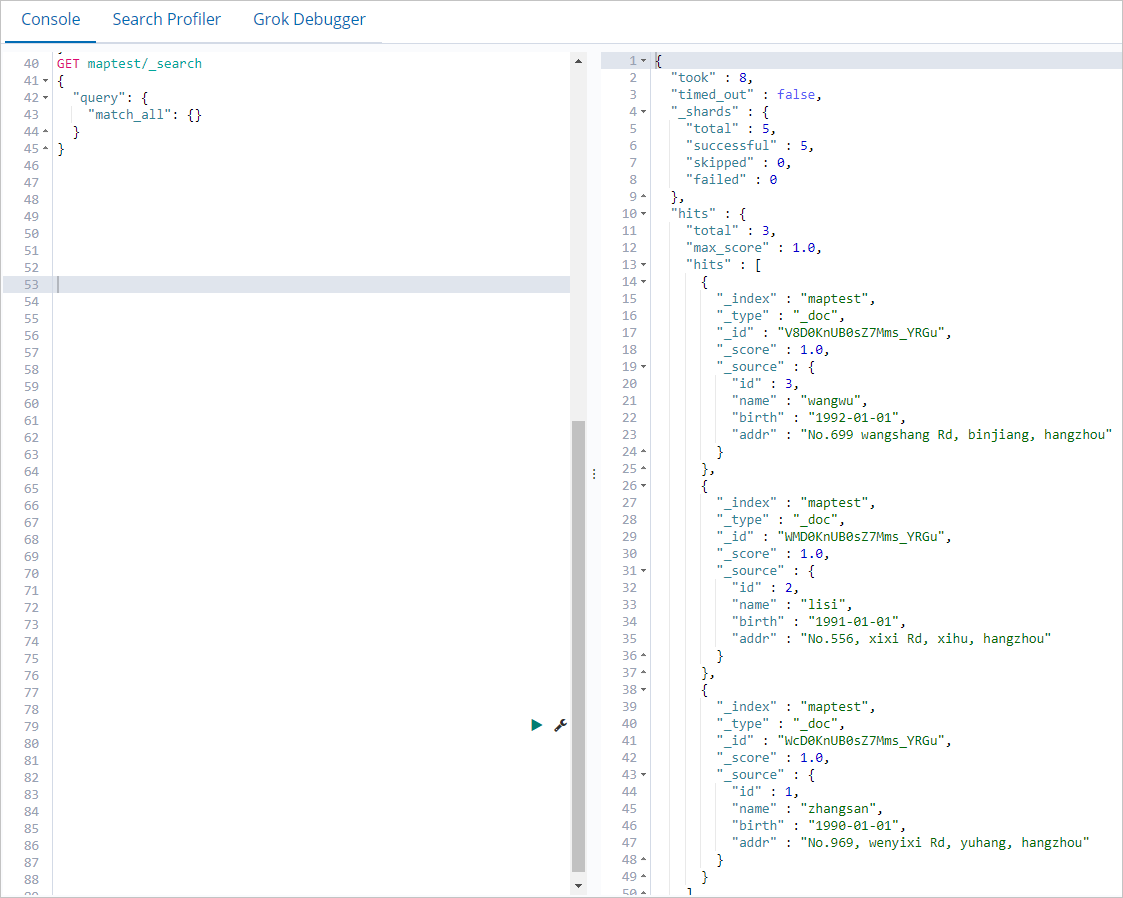ES-Hadoop is a tool developed by open source Elasticsearch. It connects Elasticsearch to Apache Hadoop and enables data transmission between them. ES-Hadoop combines the quick search capability of Elasticsearch and the batch processing capability of Hadoop to achieve interactive data processing. For some complex data analytics tasks, you must run a MapReduce task to read data from the JSON files stored in Hadoop Distributed File System (HDFS) and write the data to an Elasticsearch cluster. This topic describes how to use ES-Hadoop to run such a MapReduce task.
Procedure
Preparations
Step 1: Upload the ES-Hadoop JAR package to HDFS
Step 2: Configure POM dependencies
Create a Java Maven project and add the following POM dependencies to the pom.xml file of the project.
<build>
<plugins>
<plugin>
<groupId>org.apache.maven.plugins</groupId>
<artifactId>maven-shade-plugin</artifactId>
<version>2.4.1</version>
<executions>
<execution>
<phase>package</phase>
<goals>
<goal>shade</goal>
</goals>
<configuration>
<transformers>
<transformer
implementation="org.apache.maven.plugins.shade.resource.ManifestResourceTransformer">
<mainClass>WriteToEsWithMR</mainClass>
</transformer>
</transformers>
</configuration>
</execution>
</executions>
</plugin>
</plugins>
</build>
<dependencies>
<dependency>
<groupId>org.apache.hadoop</groupId>
<artifactId>hadoop-hdfs</artifactId>
<version>2.8.5</version>
</dependency>
<dependency>
<groupId>org.apache.hadoop</groupId>
<artifactId>hadoop-mapreduce-client-jobclient</artifactId>
<version>2.8.5</version>
</dependency>
<dependency>
<groupId>org.apache.hadoop</groupId>
<artifactId>hadoop-common</artifactId>
<version>2.8.5</version>
</dependency>
<dependency>
<groupId>org.apache.hadoop</groupId>
<artifactId>hadoop-auth</artifactId>
<version>2.8.5</version>
</dependency>
<dependency>
<groupId>org.elasticsearch</groupId>
<artifactId>elasticsearch-hadoop-mr</artifactId>
<version>6.7.0</version>
</dependency>
<dependency>
<groupId>commons-httpclient</groupId>
<artifactId>commons-httpclient</artifactId>
<version>3.1</version>
</dependency>
</dependencies>Step 3: Compile code and run a MapReduce task
Step 4: Verify the results
Summary
This topic describes how to use ES-Hadoop to write data to Elasticsearch by running a MapReduce task in an EMR cluster. You can also run a MapReduce task to read data from Elasticsearch. The configurations for data read operations are similar to those for data write operations. For more information, see Reading data from Elasticsearch in open source Elasticsearch documentation.
